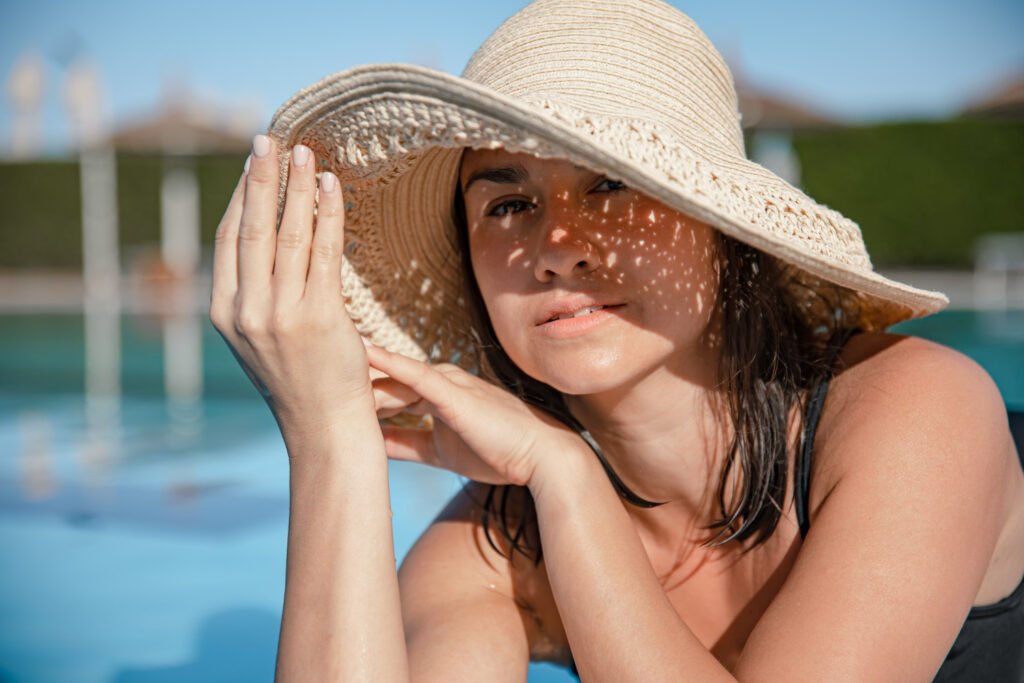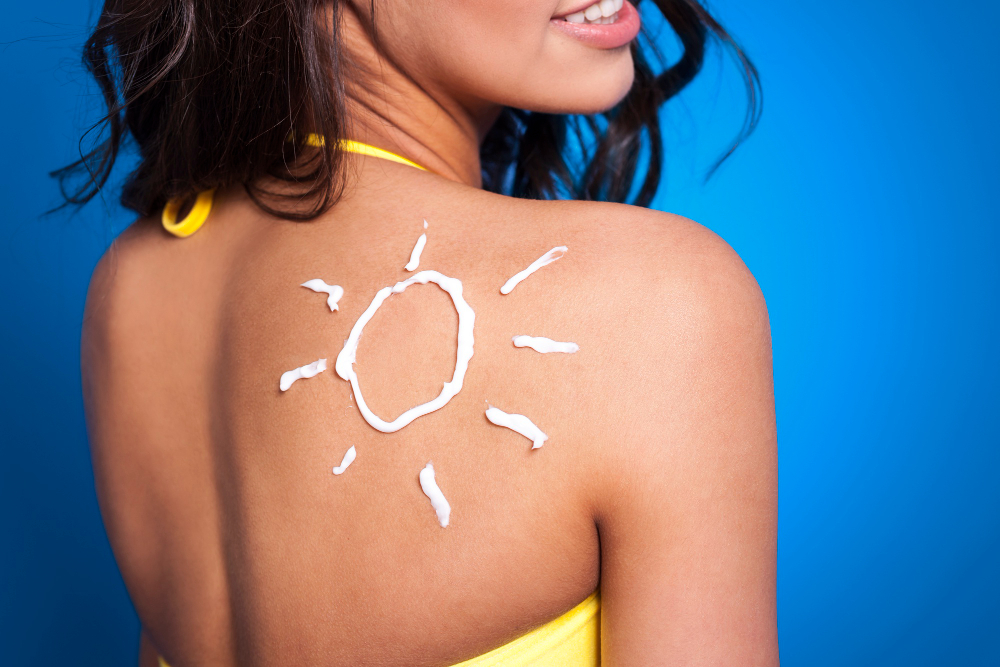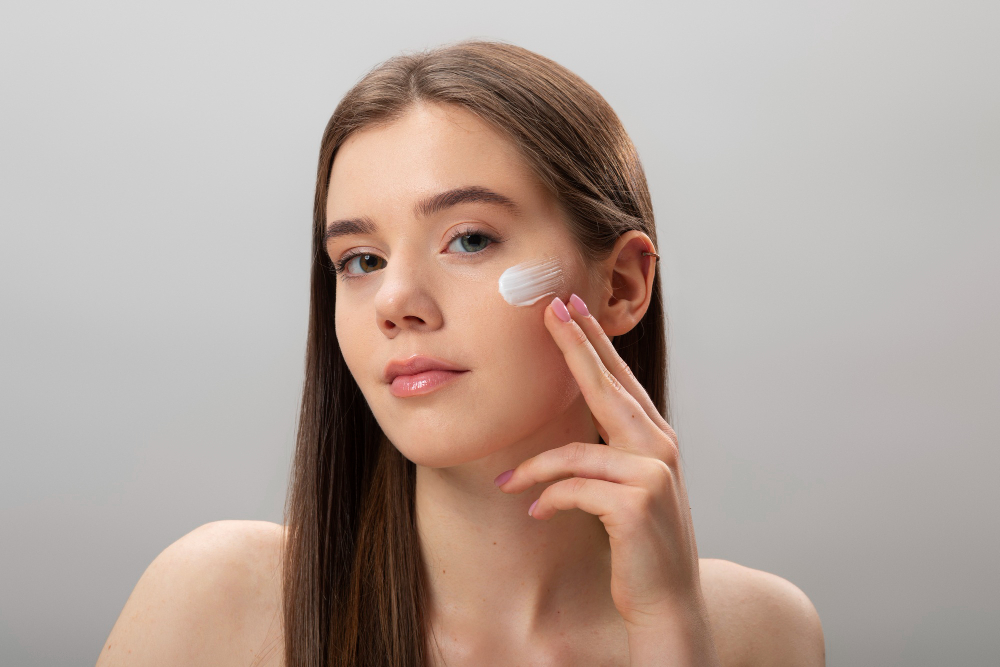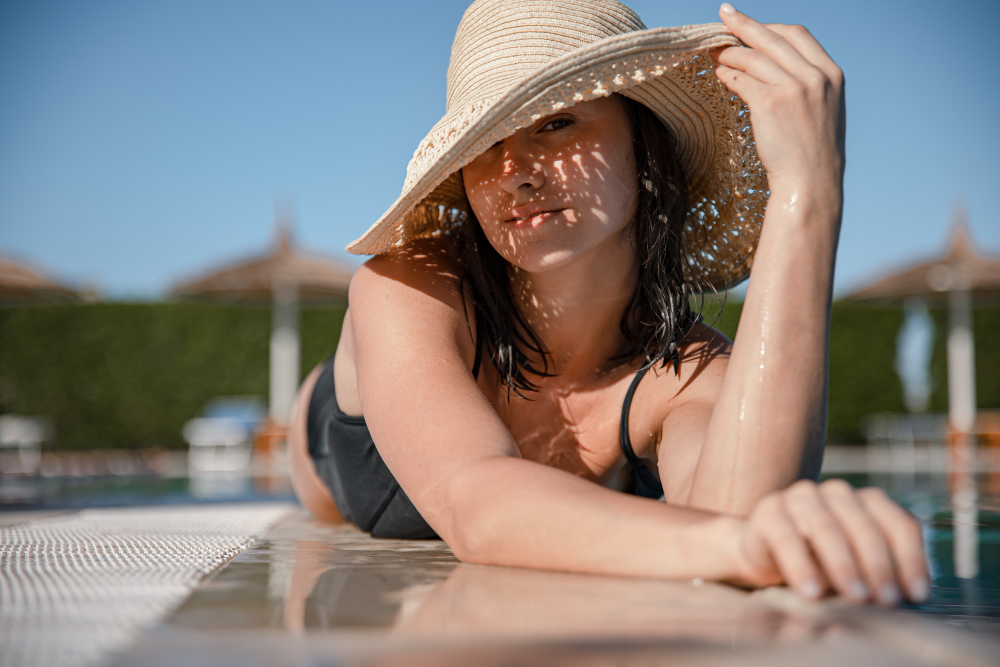Sun Tan
What is Sun Tanning?
It’s common to observe a shade difference between exposed body parts—such as the face, arms, hands, legs, feet, back, and neck—and those shielded from sunlight. When skin cells encounter the sun’s UV rays, a protective mechanism kicks in. Melanin, the pigment from melanocytes, is transferred to the surface skin cells called keratinocytes. This process acts as a shield, blocking UV radiation to prevent further cell damage. This natural defense mechanism results in visible tanning over the exposed areas.
Tanning is essentially the skin’s response to increased melanin production after exposure to sunlight, creating a darkening effect. It serves as the body’s inherent defense, akin to a protective shield against the sun’s impact.
Individuals with lighter skin tones often struggle to generate sufficient melanin pigment. Even when produced, the efficiency is comparatively lower, leading to skin burn in exposed areas.
How do you know if you have a Tan?
The emergence of one or two shades of difference in your skin tone is identified as tanning. Utilized worldwide, the Fitzpatrick scale serves as the standard scale for categorizing skin types. It provides an estimation of how various skin types respond to ultraviolet (UV) light. According to the Fitzpatrick scale, individuals of Indian descent typically fall under skin type 4 or 5. Skin type 4 experiences minimal burning and easily achieves a tan, while skin type 5 rarely burns and tans effortlessly.
What Causes suntan?
The sun emits two types of ultraviolet radiation that reach our skin: Ultraviolet A (UVA) and Ultraviolet B (UVB). As these rays penetrate the lower layer of the epidermis, they stimulate Melanocytes to produce more melanin. Both UVA and UVB play a role in the tanning process.
Melanin, present in the outer layer of our skin, is the agent responsible for darkening. While its presence may influence skin tone, melanin proves to be a valuable pigment by protecting the skin from the sun’s ultraviolet rays. Exposure to the sun prompts the skin to produce more melanin, resulting in a tan. However, prolonged sun exposure can lead to adverse effects such as sunburns and a reduction in skin elasticity, contributing to premature aging.

Skin type and How they react to Sun?
Various skin tones exhibit distinct responses to sun exposure, resulting in different types of tans.
Pale White: Individuals with this skin type invariably experience sunburn but do not undergo tanning.
White to Light Beige: This skin type is prone to sunburn with minimal tanning effects upon sun exposure.
Beige: Beige skin burns moderately under the sun, developing a light brown tan.
Light Brown Skin: Experiencing minimal burning, light brown skin tends to tan into a moderate brown shade.
Moderate Brown Skin: Considered fortunate, this skin type rarely burns and achieves a dark brown tan, possibly requiring future tan removal treatments.
Dark Brown or Black Skin: Endowed with a higher melanin content, these skin types are resistant to sunburn and tan profoundly when exposed to sunlight.
Does sunscreen reduce tan?
While sunscreen plays a crucial role in preventing pigmentation, it is important to note that relying solely on sunscreen may not be sufficient for reducing existing pigmentation. To address pigmentation effectively, incorporating medications and tailored treatments based on your skin type is essential. Explore options such as Chemical peels, Microdermabrasion, Laser toning, specialized creams, facial washes, cleansing lotions, and/or home remedies for tan removal. These approaches can contribute to a comprehensive strategy for combating pigmentation and achieving clearer, more even-toned skin.
How To Remove Sun Tan From Face And Body?
Sun tan has become an escalating concern globally, attributed in part to the impact of global warming on the ozone layer. The compromised ozone layer allows UV rays to effortlessly penetrate the atmosphere. Fortunately, achieving radiant and healthy skin is now more accessible than ever.
Seeking professional guidance ensures a personalized approach to address sun-induced skin concerns, allowing you to attain the glowing and healthy skin you desire.

Home Remedies to Remove Sun Tan
- One of the easiest tan removal home remedies is aloe vera. Apply aloe vera gel on the affected area to help get rid of dark spots due to sun tanning.
- Apply a layer of lemon juice mixed with honey to remove sun tan and smoothen skin texture. You can also add some sugar to the lemon juice and scrub your skin gently to slough off dead cells from the surface.
- Tomatoes are rich in antioxidants that help in brightening skin. Yoghurt on the other hand contains lactic acid which softens the skin. Mix raw tomato juice and yoghurt to form a paste. You can use this paste on your tanned face, neck, and face, and wash off after 20 minutes.
- Directly apply cucumber juice with the help of a cotton ball. Cucumber is highly beneficial for tanned and sunburnt skin. Cucumber is a natural tan removal ingredient that not only helps in skin lightening but also has a cooling effect.
- Mix papaya and honey to lighten the skin and make it a paste or gel. Papaya is rich in natural enzymes that have skin bleaching and exfoliating properties. Honey on the other hand is a natural moisturiser and a skin-soothing agent. Honey is also rich in antioxidants that remove free radicals from the skin which cause ageing.
- Mix oatmeal and buttermilk and form a paste and apply on the tanned skin. Rub the paste for some time and leave it for 20 minutes. Oatmeal has excellent exfoliating and skin cleansing properties. Whereas, Buttermilk is rich in lactic acid which can soften the skin and improve skin tone
- Sandalwood or Chandan is a miracle ingredient when it comes to instant tan removal from the face. It is pretty much a one-stop solution to all other types of skin woes too. Being gentle and cooling, sandalwood removes tan from the face and improves the texture and tone of your skin as well.
- Potato juice is a powerful bleaching agent. It can lighten sun tan, as well as, minimize dark circles. Apply the juice on tanned areas of your face and leave it for 15 minutes. Wash it off with cold water.
Why Ashtamudi?
A day spent in the sun may lead to an unwelcome outcome – the emergence of dark spots and an uneven skin tone. Our commitment is to assist you in restoring your skin tone through treatment methods rooted in evidence, comprehensive education, meticulous skin care monitoring, and transparent communication regarding anticipated results, all geared towards ensuring your satisfaction.
We prioritize safety, speed, and effectiveness in our procedures for treating skin pigmentation and tan removal. Our approach guarantees a relatively painless experience, underscoring our commitment to your well-being and achieving optimal results.
Our Full Menu – View
Remember, beauty is not just about looking good; it’s about feeling good. Treat yourself to the luxurious experience your hair deserves at Ashtamudi Beauty Salon.
Call us at +971 561989947
To schedule your hair treatment or for more information, contact Ashtamudi Wellness Ladies Salon. Your beautiful hair transformation awaits!
View our full Gallery – Click Here
Our Full Menu – View





